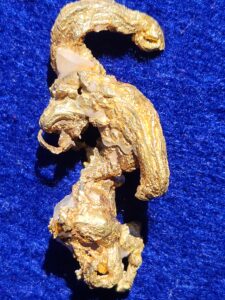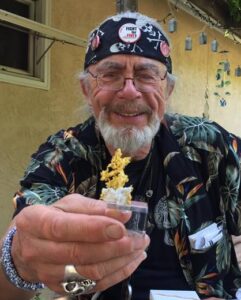
Of the more than 5,300 identified minerals, only 22 are native metals and these include not only the familiar gold, silver and copper but also such rare and often overlooked members as aluminum, tungsten and zinc.
Unique among the mineral classes, native metals can crystallize by combining atoms of just one element. In contrast, for silicates like tourmaline, the silicon ions have to wait for a multitude of other different ions to arrive in order to form crystals. Because of this simple distinction, the habit of native metals can give a direct signal about the conditions of temperature, pressure, chemical environment and time leading to crystallization. As a result, native metals display a wide range of habits including dendrites, leaves, herringbones, hoppers, arborescent sprays, wires and euhedral crystals, each with a different story of origin.
It’s important to recognize that just like the remarkable formation of world-class gold specimens such as the Dragon and Harvard’s Ram’s Horn, all the native metals have fascinating stories of crystallization that David will explore.
PHOTO (above): Wire Gold with Quartz, 5cm. El Infierno Mine, Santa Elena de Uairen, Bolivar, Venezuela. David Mustart Collection and Photo.
David fell in love with minerals at age 4 when he chipped muscovite flakes from a large glacial erratic in his family’s backyard, and by age 6, he knew he wanted to be a geologist.
At the University of British Columbia, he developed his passion for ore deposits and earned his BSc in 1965 with a thesis analyzing trace elements in nuggets of placer gold that he’d collected from miners in the Klondike. At Stanford, he completed his PhD in experimental petrology on the origin of pegmatites with Richard Jahns in 1972. He went on to San Francisco State University where he taught courses in ore deposits for 48 years until his retirement in 2020. While at SFSU, he developed his mineral collection for teaching and research by concentrating on mineral associations from major ore deposits in the Western U.S. and sites worldwide.
In 2014, inspired by Rob Lavinsky, he began focusing his research on native metals, particularly gold, silver and copper.
